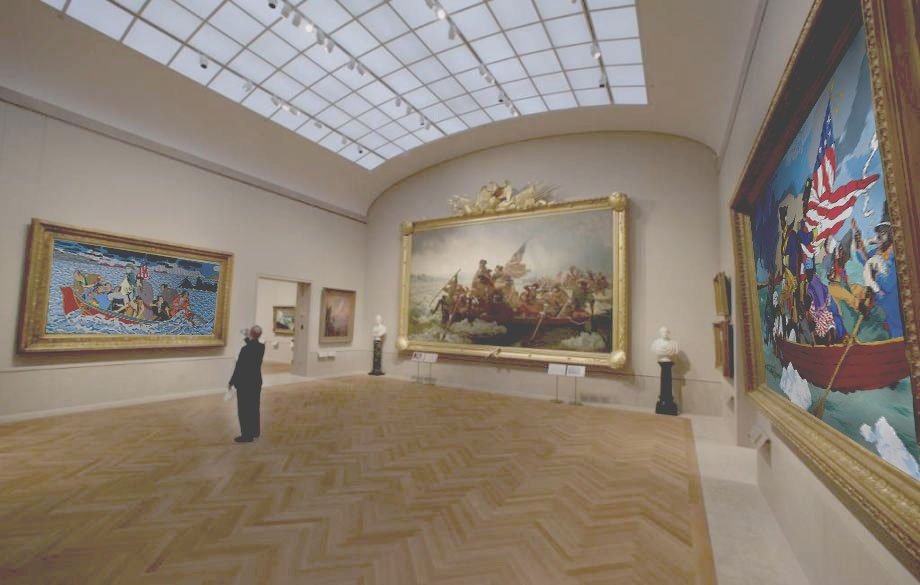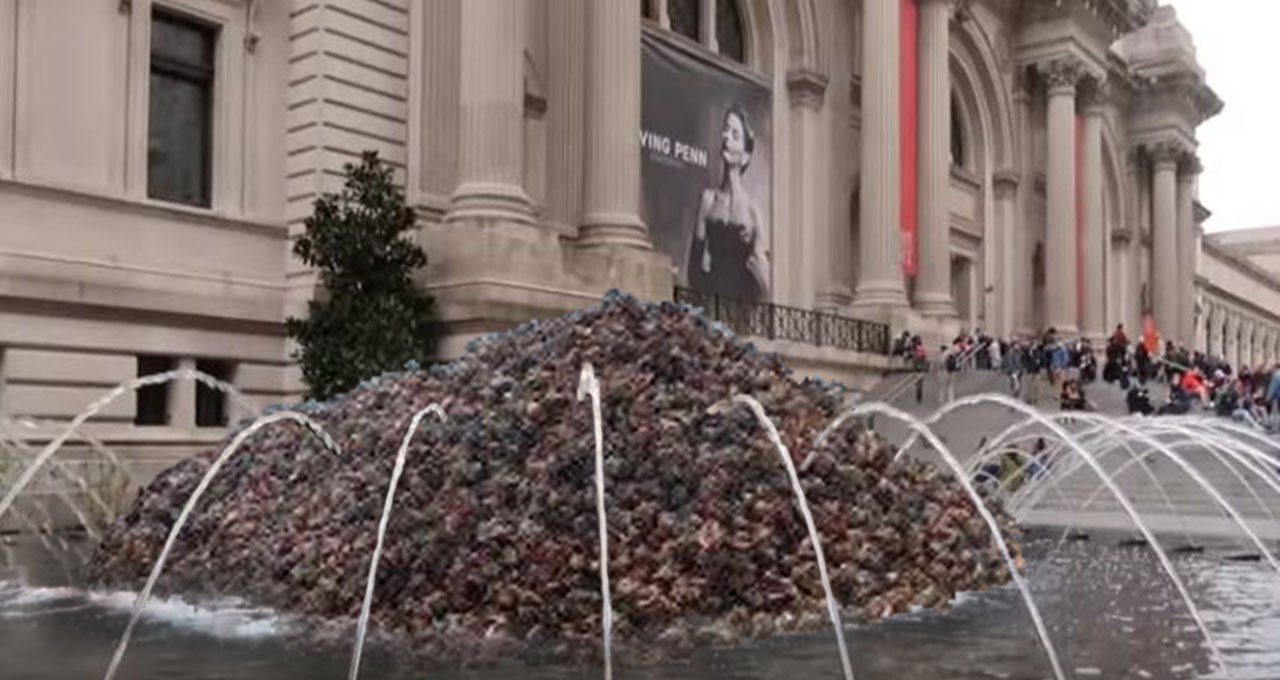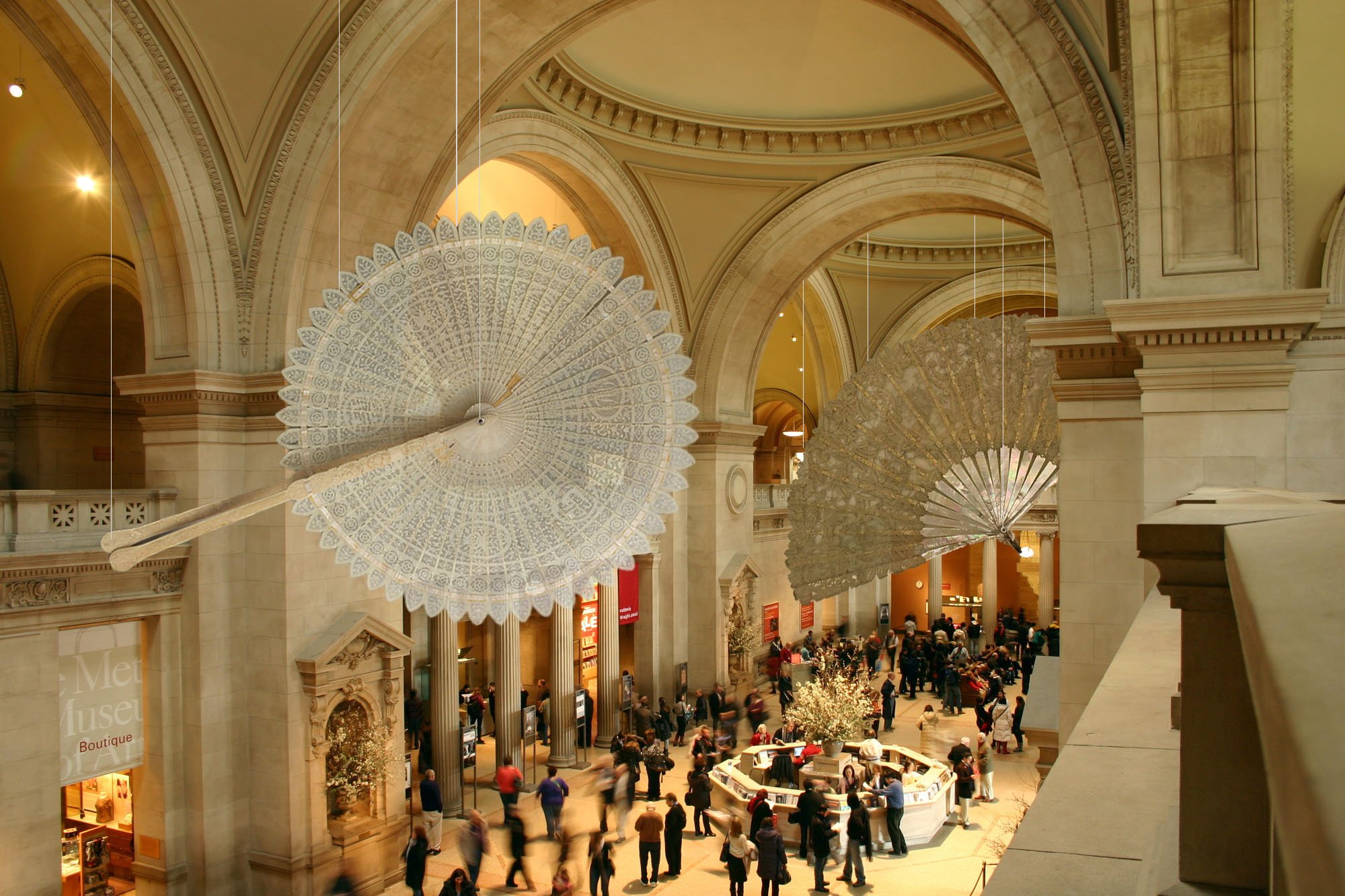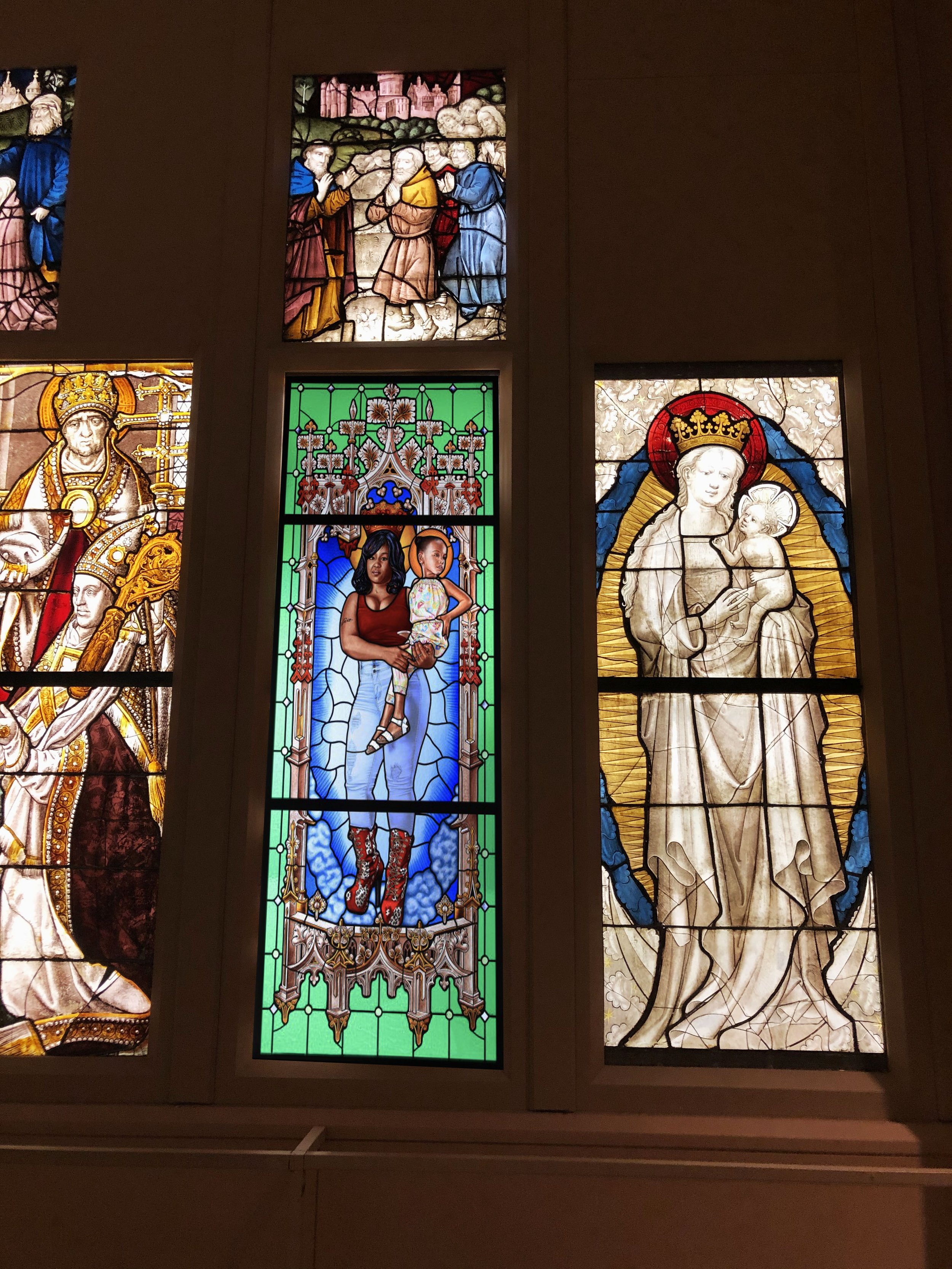Transformation is a show surveying the contemporary art of the historically displaced in relationship with classical art of Western Anglo culture. Displace is to “force (someone) to leave their home, typically because of war, persecution, or natural disaster.” The contemporary artist, and the grander scope of the show, focuses on the postmemory of ‘home.’ Through generations of uprooting people from their homelands and intended life and futures, there are many communities and individuals looking for who they are, where they belong, and what they could have been. The artists focus on the experience of being raised “dominated by narratives that preceded their birth, whose own belated stories are evacuated by the stories of the previous generation.” By using the high art of their oppressor, Western culture, the artists are addressing the effects of colonialism and imperialism on the identities of generations of communities. All of the artists we have chosen for this exhibition, focus on the topics of race, sexuality, social class, gender, beauty, and religion throughout their pieces in the selected galleries at the Metropolitan Museum of Art.
The contemporary objects will be located next to the classical works in their historically accurate galleries. For example, Paul Gauguin’s painting, Two Tahitian Women, will be placed next to contemporary artist Kehinde Wiley’s painting, Portrait of Kea Loha Mahuta II. Both pieces will be installed in Nineteenth- and Twentieth-Century European Painting Gallery 825, which is the permanent location of Paul Gauguin’s work. This layout will give the visitors the opportunity to view other pieces on view from the same classical artist, while also being exposed to additional works from the same time in history. We feel the layout will ultimately strengthen the overall narrative of the exhibition for the visitors.
The Metropolitan Museum of Art has been regarded as one of the greatest encyclopedic museums that exist today. The collection represents 5,000 years of art from around the world composed of 17 different curatorial departments that study, exhibit and care for the objects. We wanted to celebrate these attributes of the museum by creating new dialogs for a selection of the MET’s most iconic artworks. Transformations utilizes 13 pieces from the MET’s permanent collection, representing eight of the MET’s curatorial departments. The exhibition will display 41 objects in total; 20 of which will be classical works and 21 that will be contemporary works. The classical and contemporary pieces will be directly juxtaposed against each other in different galleries throughout the museum.
We decided to format the exhibition keeping the agency of the visitor in mind. It was important for us to create an experience where the visitor remains in control of what they choose to see. By utilizing six different permanent art galleries & two public spaces at the MET, we are giving the visitors the freedom to participate with the pieces that interest them and skip over the ones that don’t. The six galleries the exhibition is installed in are as follows: Greek & Roman, Medieval Treasury, American Wing, Nineteenth & Twentieth Century European Paintings, European Paintings, and Drawings and Prints.





The exhibition will begin outside the museum’s facade where contemporary artwork, specially commissioned for Transformation, will be displayed in the MET’s fountains. We aim to spark the visitor’s curiosity while they are waiting in line or hanging out on the museum’s famed steps. Intrigue for the exhibition will continue as the visitors move into the MET’s Great Hall, which is the main entrance of the museum. Two whimsical large scale contemporary commissions will be installed from the ceilings of the Great Hall to act as focal points to raise awareness for this special exhibition.
The main information desk at the center of the Great Hall will be covered in signage for the show. The staff working at the information desk will be trained to brief visitors on the exhibition and provide maps which will guide visitors through the various exhibition galleries. In addition to the information desk, maps and exhibition labels will be provided in each of the six exhibition galleries in order to draw in unknowing visitors as they wander through the museum.
One of our initiatives for Transformation was to include a wider range of contemporary art. A way of meeting this need is through the commissioning of two pieces, one for the Great Hall and the other for the two exterior fountains. These commissions will be completed by the Chinese Artist, Ai Wei Wei. He is an acclaimed artist who focuses on current political issues pertaining to China and his experience and memories growing up in communist mainland China. Following his massive NYC project in 2018, Good Fences Make Good Neighbors, his public sculpture is high in demand and he is one of the leading voices in provocative andthought-provoking art. We gave Ai Wei Wei open rein of our collection to make site specific pieces for our exhibition.
For our Great Hall commission, Ai Wei Wei selected a 19th century Chinese fan and a late the 19th- early 20th century French fan for the Great Hall installation. He states that the function is similar between the two fans, but materialy they speak to the larger issue of class and meaning. He will be making approximately 75 feet long paper mache and bamboo stalk adaptations of the two fans to be suspended in the Great Hall. The paper mache and bamboo are meant to resemble traditional kites from Ai Wei Wei’s childhood, alluding to the innocence of form. The fans will be accompanied by wall labels for this project. These labels will be located on the wall adjacent to the audio guide and membership desk and on the exterior wall of the entrance to our main gift shop.
The second Ai Wei Wei commision is inspired by the hard body of the French fan. There is pearlescent carved shell pieces as well as a Dutch “Nautilus Cup” from 1602 from our collection. Ai Wei Wei was attracted to the polished opalescent shell surrounded by finely sculpted gold scene, which included Hades and ornamentation detailing decorated on the head and body of the chalice. Ai Wei Wei wants to focus on the societal connotations of shells an conchological history of use in Eurpean high society. For his second commission, Ai Wei Wei has requested that 300 shells be piled into the center of both our front exterior fountains. He specifically wants the water to fall on top of the shells in the fountains. This project is meant to symbolize the different functions and classes surrounding materiality between European and Asian culture. Shells symbolize strength and a warrior in Asia, and in Europe they were a sign of wealth. There will be temporary plaques put up on the exterior walls of our institution directly in reflection of the two fountains. There will also be information about the two commissions at our information desk in the Great Hall.
Another pair of key images included in the exhibition are Kehinde Wiley’s stained glass piece titled, Saint Mary (2016) along with a German piece from the first half of the fifteenth century titled, Stained Glass Panel with the Virgin and Child (1430- 35), which is on permanent view in the MET’s Medieval Treasury. Saint Mary (2016), comments on sacred iconography and the vulnerability of Christianity. Wiley decided to use stained glass for his rendition of “Madonna and Child” motifs because “ in American culture, light streaming through something reveals the divine.” In this case, the divine is a woman of color dressed in urban clothing holding her toddler aged daughter on her hip. Instead of depicting Mary and Jesue, this is a regular woman and child chosen from the street. We believe through installing this piece next to the traditional, Stained Glass Panel with the Virgin and Child (1430-35), a new dialog about religion, race, and gender will be revealed to the visitors.
Emanuel Leutze’s Washington Crossing the Delaware (1851) is the pinnacle of American history and art history. It is also one of the Metropolitan Museum’s major visitor draws. The painting depicts the first U.S. president, George Washington, crossing the Delaware River with members of the Continental Army from the American Revolutionary War on the night of December 25–26, 1776. Robert Colescott and Roger Shimomura, two contemporary artists we have selected to be paired with Washington Crossing the Delaware in Transformation. These contemporary works address two deplorable periods of U.S. history that their communities, in Shimomura’s case, were directly involved and affected by. Robert Colescott (1925-2009) was a contemporary painter from Oakland, California who addressed race, U.S. and art history in his work. In his painting, George Washington Carver Crossing the Delaware: Page from an American History Textbook (1975), he mimics the forms and narrative of Leutze's Washington Crossing the Delaware, but replaces George Washington with early 20th century black Scientist, George Washington Carver. Colescott also replaces the surrounding army men from the original work with caricature like stereotype black figures in the boat. This is a reflection of African American history in the United States and hints to the conflicting histories of notable African American figures as well as the real African American experience. It highlights the defamation and crude depictions of African Americans in the United States throughout all of U.S. history since the beggining of slavery.
Roger Shimomura is a Japanese American from Seattle, Washington who commonly comments on the Japanese American experience. He also draws on his own personal experiences being uprooted and kept against his will in Japanese Internment camps for 2-3 years during World War II. In Shimomura’s interpretation of Emanuel Leutze’s Washington Crossing the Delaware, in Shimomura Crossing the Delaware (2010), Shimomura depicts himself in the place of George Washington and replaces Washington’s army with traditional and caricature like adaptations of Japanese warriors. Like Colescott, Simomura uses exaggerated visual stereotypes and Western conceptions of the race to represent the army members. Shimomura puts himself as George Washington to directly address his background and negative life experiences in the internment camps due to the U.S. government and their decisions during WWII along with the public's scrutiny following the war. Colescott and Shimomura approached their adaptations of Washington Crossing the Delaware very similarly but through their two very different experiences of generational and direct oppression in the United States.





